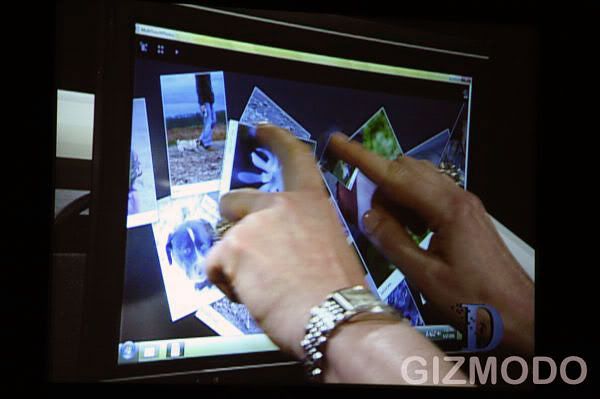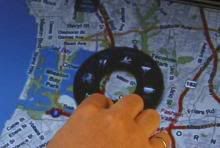Windows 7: Introducing WinFX, minus .NET?
While perusing the PDC 2008 website’s preliminary agenda, I came across two sessions that really caught my attention:Windows 7: Graphics Advances
Windows 7 enables you to advance the graphics capabilities of your applications while carrying forward existing investments in your Win32 codebase, including GDI and GDI+. New enhancements to DirectX let Win32 applications harness the latest innovations in GPUs and LCD displays, including support for scalable, high-performance, 2D and 3D graphics, text, and images. Also learn how to leverage the GPU’s parallelism for general-purpose computation such as image processing.
and
Windows 7: Web Services in Native Code
Windows 7 introduces a new networking API with support for building SOAP based web services in native code. This session will discuss the programming model, interoperability aspects with other implementations of WS-* protocols and demonstrate various services and applications built using this API.
After reading these, I could come to only one conclusion: Microsoft is building an unmanaged version of WinFX (at least the WPF and WCF components of it), currently known as .NET Framework 3.0.
This isn’t the first we’ve heard of this. Long first revealed a job description back in March that related to a new, native UI framework for Windows 7. The PDC session overview doesn’t add much (outside of the WCF component) to what was revealed there, but it does seem to indicate that this framework hasn’t been cut from Windows 7.
A native WinFX excites me for many reasons. One reason is that it opens up the robustness of the Windows Presentation Foundation (WPF) to native developers, most likely with a significant performance gain versus the current managed WPF developers use now.
Also, according to the job description, this framework will use a markup language to define user interfaces (Most likely XAML or something extremely similar), which means designers will be able to use their knowledge (and code) across Win32, .NET and Silverlight now. This could speed adoption of all three technologies, which is nice.
Perhaps the most exciting things to the average user are the possibilities this offers up to Microsoft for Windows 7 itself. Microsoft jettisoned most of its vision for a graphically rich shell when it reset Longhorn development and realized that building Explorer in .NET and on top of a framework that was still in development was a bad idea. Now that this framework (milcore) is done, Microsoft should be able to harness its power rather easily through this new unmanaged WinFX framework without having to completely rewrite Explorer.
In other words, much of the UI goodness from the early Longhorn prototypes could wind up in 7.
Here’s hoping, anyway.
JunWednesday,11,
"Superbar" the Windows 7 taskbar

The picture above comes from the video feed of Julie Larson Green’s
(Vice President of Windows Experience Program Management) demo of the
multi-touch picture browser demo app. The quality is a little rough,
but you can easily notice a few things that are different.
The first being the taskbar is higher than usual, but not as big as
double-height. If I were to guess, I’d say its somewhere around
1.75x-high. In the left corner, the Windows orb remains wedged “on top”
of the taskbar - sticking its head out a little - instead of in the
center like it is today in Vista.
The taskbar also appears ‘divided’ into sections by variations in
the color (dark, gray, lighter) to indicate the different areas.
Speaking of which, if you look at the far right corner, you’d notice
that the tray (icons & clock) is not touching the edge of
the screen, and there’s a small lighter gap. I have no explanation for
this, but is well worth keeping an eye on.

Keeping the focus on the right, the tray is also different. The
icons sit in the middle of the taskbar, instead of wrapping in
two-lines like it does today, whilst the date now wraps on two lines
instead of three. This clearly indicates this taskbar cannot
accommodate three lines of text.
Most obviously the quick launch icons are now larger in size, but the icon besides it is not
a quick launch icon instead an application. I’ve been told this
particular Windows 7 build has rendering issues which is why there’s no
label or text next to the icon, but there should have been. Apparently that feature has been canned .
Now you would probably be wondering why I just spent so much effort writing about a taskbar, and the answer is because this is what Windows 7 is about.
They’re going to take existing interface elements like the taskbar and
give them a new coat of paint with some sparkles. Different enough so
you notice them, like Walt Mossberg did.
There was another That circle menu (or pie menu) could be an indication that Microsoft From the visible icons (plane, earth) I would say that it is a
interesting tidbit that could lead to some speculation. During the
presentation Julie Larson Green’s opens a circle menu by pressing her
finger on the screen for a short period of time.
will introduce circle menus in Windows 7 on a broader scale, at least
for the time when a user is using the touch interface. It’s not yet
clear if the touch menu shown was purely related to the application or
if it was a broader menu that works in full screen applications.
specific menu of the application which does not mean that other menus
or even the Windows desktop will not have a pie menu as well.
Windows 7 To Break Backwards Compatibility
Previous versions of Windows provided backwards compatibility with
older versions of windows, making it easy for users to upgrades as
their favorite programs would still work.
However, with Windows 7 Microsoft are approaching backwards
compatibility differently, and Windows 7 will not be binary compatible
with older versions. This won’t mean that older programs won’t run, but
that virtualisation will be used to make them run. The key drivers for
this are performance improvements, but also in an attempt to sidestep
regulatory programs.
Vista struggles with performance because Microsoft choose to
incorporate regulatory challenged features like Internet Explorer and
Windows Media Player using a modular design, rather than the monolithic
processes used in previous versions of windows. The greater use of
componentisation led to performance issues due to the increased number
of libraries within the operating system. Simply put, the more separate
files your hard drive has to load, the slower your system is going to
run.
Another reason why Vista runs so slowly is:
The operating system stores multiple copies of core
system libraries, as each revision of a library typically adds/removes
functions, and applications compiled with dynamic links to a specific
version of a DLL file may call on functions not present in the
currently installed library. Vista aims to solve this issue through the
WinSxS collection; essentially a massive store of
every differing version of libraries present on the system. That way,
when an application makes a call for a dynamically linked library,
Vista queries the WinSxS cache for the correct version, which is then
loaded into memory. On the average system, this directory can be
several gigabytes in size, with much of the code duplicated between the
separate versions many times.
By not being binary compatible with previous versions of Windows and
being built from the ground up, will give Windows 7 significant
performance improvements. This will make it easier for developers to
produce faster apps as they won’t have to worry about backwards
compatibility, but it will increase the upgrade pain for users who may
find that some of their existing applications will no longer work and
will need upgrading.
Where do you lie on the trade-off between compatibility and speed? Do you think Microsoft are making a mistake here?
JunThursday,5,
Windows 7 seven First Official Video
Microsoft’s Julie Larson-Green had the honor to do the demonstration saying that Microsoft is using part of the multi-touch technology from Microsoft Surface to enhance Windows 7. The operating system the demonstration is running on is a Dell Latitude XL with Windows 7.
This demonstration is basically showing how Microsoft Surface could enhance Windows 7 on computers. It’s still a bit early to judge if this feature will have a big impact and how it will be implemented into Windows 7. I think that monitors with touch support will still be a minority in 2010 when Windows 7 comes out. Great for notebooks or other mobile devices though.
Here are some quotes from the interview with Bill Gates and Steve Ballmer: (click for full transcript)
* Windows 7 is apparently months away, due late in 2009.
* Walt asks Ballmer if he’s worried about the next iteration of Mac OS X, which will likely be released before Windows 7. Is there a risk that the work you’re doing now with multi-touch will look dated when Apple (AAPL) releases its next OS?
Ballmer says he’s confident Microsoft will have fantastic Windows 7 PCs, regardless of what Apple’s got on the market. “There’s a lot in Windows 7, and our goal is to produce fantastic PCs with our hardware partners.”
* The conversation turns to Windows 7, which Microsoft hasn’t said too much about. Clearly, the company has learned from the media beating it took over the defeatured and perennially delayed Windows Vista. Indeed, in a post to the Windows Vista blog today, Microsoft’s Chris Flore noted that Microsoft is being very careful about releasing details about Windows 7. “What is a little different today is when and how we are talking about the next version of Windows,” Flore wrote. “So, why the change in approach? We know that when we talk about our plans for the next release of Windows, people take action. As a result, we can significantly impact our partners and our customers if we broadly share information that later changes. With Windows 7, we’re trying to more carefully plan how we share information with our customers and partners. This means sharing the right level of information at the right time depending on the needs of the audience.”
No comments:
Post a Comment